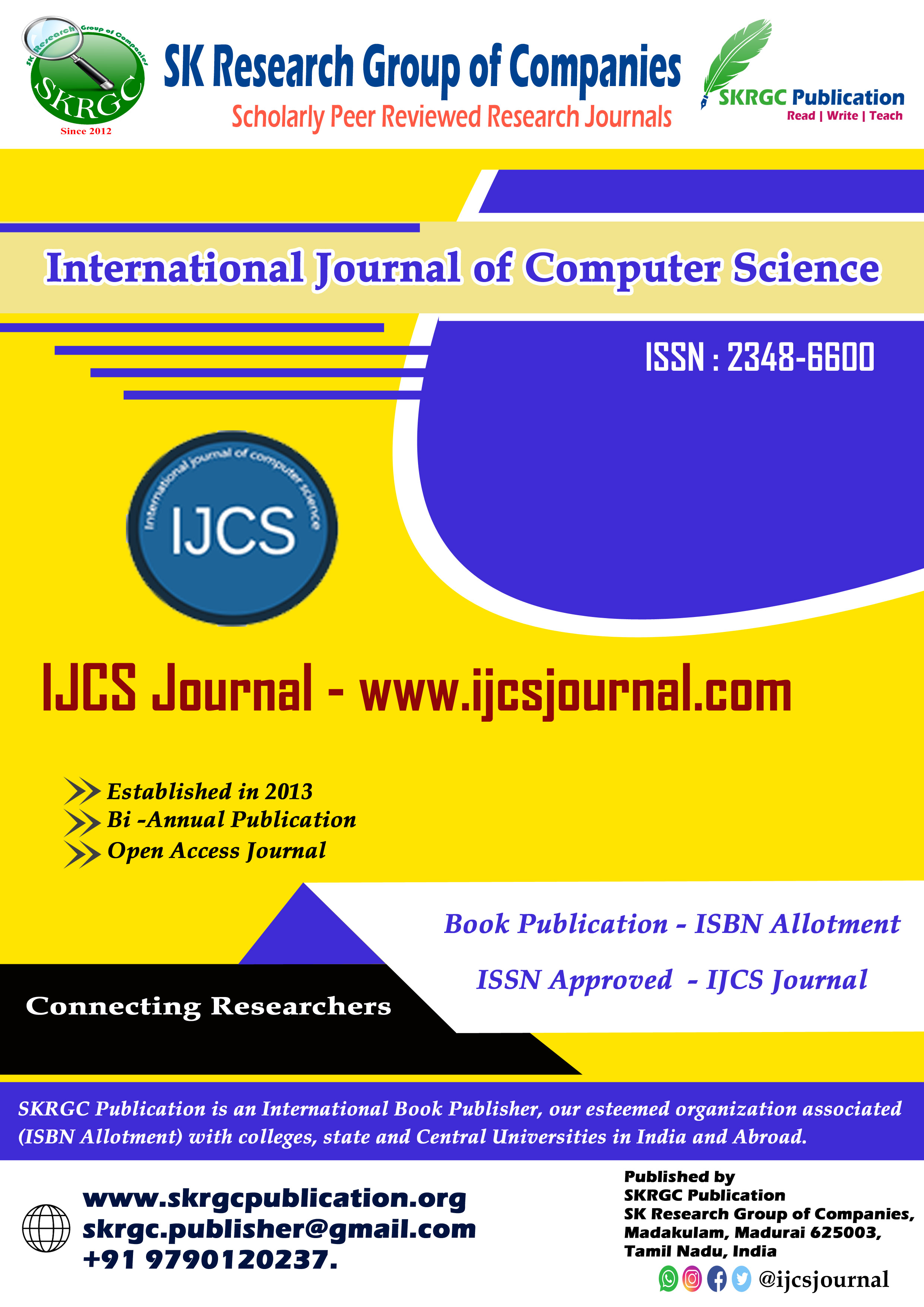Voice Based E-Mail System for Blind
International Journal of Computer Science (IJCS) Published by SK Research Group of Companies (SKRGC).
Download this PDF format
Abstract
Abstract In today's world communication has become much easier because of the integration of internet communication technologies. However, visually impaired people find it very difficult to use this technology because using it requires visual acuity. Although new advances have been made to enable them to use computers properly, no inexperienced user who has the challenge of visualizing them can use this technology as well as the average user can do that unlike ordinary users who need to get used to using available technology. This paper aims to create an email system that will help even the visually impaired to use these services to communicate without previous training. The program will not allow the user to use the keyboard but will only work on speech processing and text conversion. And this program can be used by any ordinary person and for example one who can read. The program is based entirely on interactive voice response that will make it easy to use and efficient.
References
- R. Girshick, “Fast R-CNN,” in Proceedings of the 15th IEEE International Conference on Computer Vision (ICCV '15), pp. 1440–1448, December 2015.
- T. Chen, S. Lu, and J. Fan, “S-CNN: Subcategory-aware convolutional networks for object detection,” IEEE Transactions on Pattern Analysis and Machine Intelligence, 2017.
- Jason Brownlee, “Step-by-step tutorials on deep learning neural networks for computer vision in python with Keras”, Google Books, 4 April 2019.
- H. Lee, R. Grosse, R. Ranganath, and A. Y. Ng, “Unsupervised learning of hierarchical representations with convolutional deep belief networks,” Communications of the ACM, vol. 54, no. 10, pp. 95–103, 2011.
- N. Doulamis, “Adaptable deep learning structures for object labeling/tracking under dynamic visual environments,” Multimedia Tools and Applications, pp. 1–39, 2017.
- N. Doulamis and A. Voulodimos, “FAST-MDL: Fast Adaptive Supervised Training of multi-layered deep learning models for consistent object tracking and classification,” in Proceedings of the 2016 IEEE International Conference on Imaging Systems and Techniques, IST 2016, pp. 318–323, October 2016.
- R. Girshick, J. Donahue, T. Darrell, and J. Malik, “Rich feature hierarchies for accurate object detection and semantic segmentation,” in Proceedings of the 27th IEEE Conference on Computer Vision and Pattern Recognition (CVPR '14), pp. 580–587, Columbus, Ohio, USA, June 2014.
- X. Wu, R. He, Z. Sun, and T. Tan, A light CNN for deep face representation with noisy labels, https://arxiv.org/abs/1511.02683.
- J. Long, E. Shelhamer, and T. Darrell, “Fully convolutional networks for semantic segmentation,” in Proceedings of the IEEE Conference on Computer Vision and Pattern Recognition (CVPR '15), pp. 3431–3440, IEEE, Boston, Mass, USA, June 2015.
- A. Diba, V. Sharma, A. Pazandeh, H. Pirsiavash, and L. V. Gool, “Weakly Supervised Cascaded Convolutional Networks,” in Proceedings of the 2017 IEEE Conference on Computer Vision and Pattern Recognition (CVPR), pp. 5131–5139, Honolulu, HI, July 2017.
- Jason Brownlee,”A Gentle Introduction to Object Recognition With Deep Learning”, on May 22, 2019 in Deep Learning for Computer Vision
- M. Oquab, L. Bottou, I. Laptev, and J. Sivic, “Is object localization for free? - Weakly-supervised learning with convolutional neural networks,” in Proceedings of the IEEE Conference on Computer Vision and Pattern Recognition, CVPR 2015, pp. 685–694, June 2015.
- K. He, X. Zhang, S. Ren, and J. Sun, “Spatial Pyramid Pooling in Deep Convolutional Networks for Visual Recognition,” in Computer Vision – ECCV 2014, vol. 8691 of Lecture Notes in Computer Science, pp. 346–361, Springer International Publishing, Cham, 2014.
- V. Nair and G. E. Hinton, “3D object recognition with deep belief nets,” in Proceedings of the NIPS, 2009.
- C. Szegedy, W. Liu, Y. Jia et al., “Going deeper with convolutions,” in Proceedings of the IEEE Conference on Computer Vision and Pattern Recognition (CVPR '15), pp. 1–9, Boston, Mass, USA, June 2015.
- R. Girshick, “Fast R-CNN,” in Proceedings of the 15th IEEE International Conference on Computer Vision (ICCV '15), pp. 1440–1448, December 2015.
- S. Ren, K. He, R. Girshick, and J. Sun, “Faster R-CNN: Towards Real-Time Object Detection with Region Proposal Networks,” IEEE Transactions on Pattern Analysis and Machine Intelligence, vol. 39, no. 6, pp. 1137–1149, 2017.
- S. Ren, K. He, R. Girshick, and J. Sun, “Faster R-CNN: Towards Real-Time Object Detection with Region Proposal Networks,” IEEE Transactions on Pattern Analysis and Machine Intelligence, vol. 39, no. 6, pp. 1137–1149, 2017.
- Wei Fang (Member IEEE), Wang & Peiming “Tinier-YOLO: A Real-Time Object Detection Method for Constrained Environments”, IEEE Access, Dec 24,2019.
- Juain Du,”Understanding of Object Detection Based on CNN family and YOLO”, IOP conference series 1004(2018)012029.
- Wei Fang (Member IEEE), Wang & Peiming “Tinier-YOLO: A Real-Time Object Detection Method for Constrained Environments”, IEEE Access, Jan 6,2020.
Keywords
Text-to-speech, Speech-to-text, SMTP, e-mail service for blind person.

